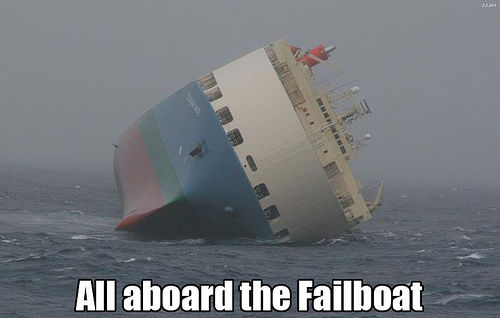I recently got back from beautiful Vancouver where the most hated format in Magic took a weekend spin. So many people are complaining about Modern, but that’s just a subset of the general rule that people are happiest when they complain. It’s a form of masturbation. I went 5-4 at the Grand Prix piloting Affinity (with two of those wins being byes) but I had a lot of fun and continue to find Modern to be an interesting and subtle format.
I think professional Magic players don’t like Modern because you can’t just pick up a deck that is “best” and run with it for a week to prepare. Most decks are much more powerful if you know the subtle interactions and how to best leverage your tools in various situations. “I don’t want to play Affinity because you just lose to Stony Silence” is sort of true but that’s not really how things work most of the time. I faced down Stony Silence once, in game three of round seven against Abzan, when I picked up my third match loss of the tournament. Ancient Grudge was the much more common menace I had to fight through.
But forget about sideboard cards and matchup roulette. I hear the common refrain that so many games of Modern are blowouts, or at least lack the marginal struggles that make Magic a great game. Two of my match losses came in fantastic, interesting, very close, almost limited-like battles against Burn and Zoo. I lost game three to Burn because I chose to “chump” block a Goblin Guide with Inkmoth Nexus a turn later than I should have. It was a decision I considered seriously at the time, and I’m still not sure if I was wrong. And I lost game three to Zoo when I didn’t throw quite enough toughness in front of a Ghor-Clan Rampager that went twenty-sized with Become Immense and Boros Charm. Oops.
But enough about that. This week I want to share some interesting situations that have come up in my recent tournament matches. Some are Modern and the others sealed or draft.
Numbah Wun
Have you ever assigned combat damage with double strike when a blocking creature has protection from a color? I hadn’t until game three of the final Swiss round of a sealed PPTQ I played a few weeks ago. I attacked with a 5/5 Hooded Hydra and my opponent stacked Tusked Colossodon and Feral Krushok in front. I responded with Temur Battle Rage and my opponent dropped Feat of Resistance giving the colossodon (which I ordered first) protection from green. Usually in these situations, you only assign damage equal to toughness to the protected creature, and then move the excess damage on to the other blocker. But it turns out that since protection prevents the first strike damage, when it comes time for regular damage, you have to assign the full amount equal to its toughness again. Which is to say my 5/5 double striking trampling Hooded Hydra slapped all ten of its damage points onto that stupid protected 7/6 colossodon and I managed to kill not a thing on the other side.
“That’s weird,” I mumbled as the judge explained the extent of the blowout to me. I had an incredible sealed deck, and I needed to win this game to advance to the top 8. Well, the nice thing about Hooded Hydra is that it matches up well against big dumb green creatures that don’t make a bunch of snakes when they die, even if you get blown out as badly as I did. And so I won that game a few turns later and squeaked into the top 8.
Numbah Too
During the quarterfinal round of the top 8 draft of that same PPTQ, my opponent from the final Swiss round was watching and got surprised by something I did. I played Yasova Dragonclaw and passed to go to combat. My opponent killed Yasova before combat, like you do against Goblin Rabblemaster to avoid the token-making trigger. So, given that the combat landscape had changed, I cast Set Adrift to remove a blocker before attacking with whatever else I had on board.
My Swiss-opponent-cum-spectator then asked to pause the game and pulled the judge aside to ask, I presume, why I was allowed to cast a sorcery after going to combat. I didn’t hear the exchange, but I assume this weird trick I pulled was the source of the confusion. The answer, of course, is that your first main phase doesn’t end until both players pass priority with an empty stack. I passed priority, but my opponent responded with Smite the Monstrous on Yasova to prevent me from stealing a blocker with her trigger. After it resolved, we went back to an empty stack in my first main phase. Combat can’t begin until I pass again, so I took the opportunity to reclaim the upper hand.
Numbah Tree
Round three of Grand Prix Vancouver I faced my eternal bad luck Affinity nemesis aka Splinter Twin. It was game three (which was a small victory in this horrible matchup) and I had already ground through two Ancient Grudges and had hopes of finishing the comeback with Inkmoth Nexus. Enter Vedalken Shackles. I mean, what the fuck, do you really need to make the matchup even better than it already is? I know, I know, it’s for other creature matchups and just happens to also work against Affinity, but still. They sign international treaties in Switzerland to stop this sort of thing. (Not that our government feels bound by such treaties.)
Anyway, it turns out that if you steal Inkmoth Nexus with Vedalken Shackles, you get to keep the land for as long as you keep the shackles tapped, even though the land isn’t a creature anymore. I think I knew this but when you are hopeless the mind takes its chances on optimism.
Numbah Pho
I played the Sunday Super Series sealed tournament on Sunday in Vancouver. My three Khans packs provided a Nomad Outpost and no other nonbasic lands. How does that even happen? At least the Fate packs give you a guaranteed one apiece, which I think helps lower the variance of manabases in the new sealed format. (They’re slightly worse on average than in six-Khans, but never a total disaster.) Anyway, that left me with an interesting blue-red tempo deck that was fairly strong but not consistent enough to be a reliable winner in a long sealed tournament. In round three at 1-1 in previous matches and current games, I had a bad run-in with the show-your-manifest dance, and it probably cost me a chance at making a run in the tournament.
Here’s what happened. My opponent attacked with a couple creatures including a manifest wearing Rageform. Before damage I used Force Away on the manifest. Then I untapped, cast Treasure Cruise for one mana, paid double red for Shu Yun’s double strike ability, and attacked with the 4/3 double striker. My opponent cast Whisk Away and said “good thing you bounced this card!” And then I realized he hadn’t revealed the manifest when I bounced it and I called a judge. Obviously if he had shown me the Whisk Away I use my mana a bit differently that turn. I probably still take a cruise but I don’t pay for double strike and I don’t attack.
The judge ruled that my opponent got a warning for failure to reveal (as per the new face down creature reveal policy) but I could not wind back the game to before I declared an attack. I was not too surprised by that, but it still stung. Yes, I screwed up by not vigilantly demanding that my opponent reveal his manifest. No, I don’t think my opponent was intentionally cheating. Yes, if I did think he was cheating I would have said so to the judges and asked to have the warning upgraded to a game loss. No, I am not sure if I’m correct in my read that it was an honest mistake. But god damn if it isn’t ridiculous that a player can hide a combat trick they are required by the rules to reveal and then win the game off the tempo blowout that results from denying me that information.
The theory underlying the ruling is that I could have demanded to see the manifest, and it’s my fault for not doing so. Sure. But there is a lot of room for abuse in this exact situation. Maybe I got unlucky. Bouncing a manifest is always a risky proposition, but I needed to do it to win the race. And it sure was convenient how it all played out for my opponent. Live and learn.
Numbah Feivel
So let’s talk about that final game against Zoo in Vancouver. I was flooding on Ornithopers when my opponent hard-cast Ghor-Clan Rampager. I drew and played an Arcbound Ravager, considered dumping a bunch of counters on a Vault Skirge and draining for five life, but attacked with the 1/1 skirge and passed instead. I needed to keep my Glimmervoids around and I was afraid of losing my entire board state to an Ancient Grudge. I was at twelve life, and my opponent then sent in his rampager.
I figured there was some sort of pump coming, so I blocked with the ravager, figuring I could sacrifice Ornithopters or whatever, get enough toughness, and even if the Rravager died I could put the counters on the Vault Skirge then. Of course that’s when my opponent slammed me with Become Immense and Boros Charm. I did not have enough artifacts to make the ravager a 9/9 that would have kept me alive at one life, so I died.
I should have also blocked with my three Ornithopters. That extra six toughness would have been enough to keep me alive, and I could have at least put three counters on the (tapped) Vault Skirge and tried to start recovering. If I’m on toughness duty I might as well have the option of absorbing two damage each instead of sacrificing and getting more modular counters. The modular trigger isn’t too helpful when you’re dead. I had a good read that pump spells were headed my way but I couldn’t be bothered to play around that combo in game three of round nine when I had already been eliminated from day two the round before. If you ever wonder why people say Affinity is a difficult deck to play, and why Arcbound Ravager is one of the trickiest cards to use, now you have a better idea why.
Carrie O’Hara is Editor-in-Chief of Hipsters of the Coast.






